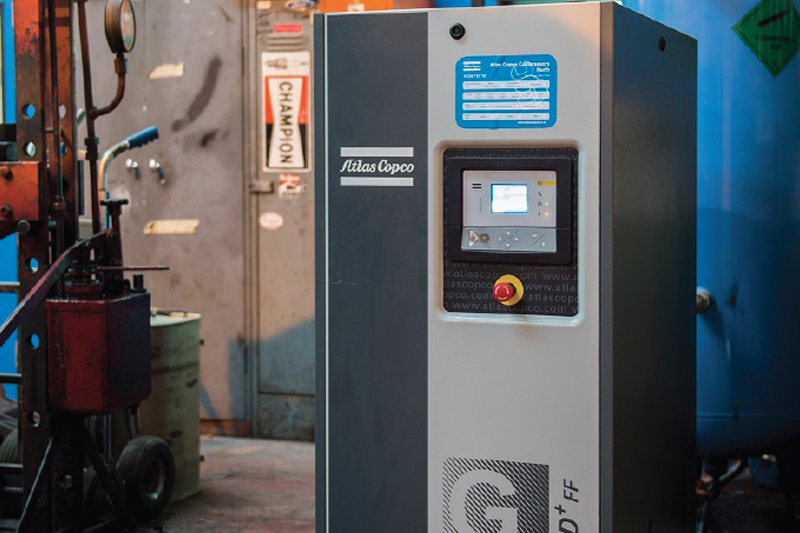
Chris Ferriday, National Sales Manager at Atlas Copco Compressors, advises vehicle workshop managers to give priority to pressure and flow when specifying compressed air systems in order to optimise performance and energy consumption.
Energy expenditure is the dominant factor in a compressed air installation’s overall cost, often representing up to 80% of a compressor’s life cycle operating budget. So, it follows that when specifying equipment for workshop applications, every care should be taken to ensure the system’s performance and output is closely matched to the application need. This precaution applies as much to the latest designs of rotary screw compressors installed in multibay commercial service operations and body repair shops, as it does to simple reciprocating units in a tyre fitting supplier’s premises.
In less energy-conscious times, air compressors were regarded as something of an ‘easy-fix’ when setting up a workshop operation. There was no real attempt to match equipment specification and performance – with any degree of precision – to actual air applications, and it was not an uncommon practice to allow equipment suppliers to over-specify air compressors’ power and output ratings without challenge or regard to outcome. The legacy of that era still remains today in many areas of the vehicle workshop industry, whereby the common benchmark for equipment performance comparison is restricted solely to the kW power rating of the installed motor drive as opposed to calculating the actual pressure and flow required to optimise productivity and energy efficiency.
It is the compressed air equipment – the consumers – in an installation which determines the requisite working pressure, not just the air compressor but the design of the compressed air system. In a large installation that means all of its pipework, valves, dryers, receivers, and filters. At the outset, the nominal air requirement for an application should be determined by calculating the air consumption for all the tools, machines, and processes that will be connected to it. Also to be considered are additions for leakage, wear, and any future changes in the compressed air requirement, which, experience shows, should be based on a probability factor that is close to 60%.

What to consider
A simple rule to bear in mind when determining the required size of an air compressor based on its rated motor power is that an increase in pressure creates a decrease in flow. For example, a basic seven-bar air compressor, driven by a 15kW motor, will deliver compressed air at a maximum volume of approximately 45l/s. However, the free air delivery from a tenbar version will deliver only 37l/s from the same power unit. Therefore, an increase in working pressure by one bar increases the power requirement by approximately 6%.
For this reason, energy-conscious manufacturers of stationary oil-injected air compressors adopt the mantra ‘pressure + flow = energy = cost’ and so offer potential customers several pressure/flow variants in each kW category. The enhanced performance of modern compressed air equipment when correctly matched in terms of pressure and flow to application demands may actually allow for a lower kW rated machine to be specified at a correspondingly smaller purchase price and for reduced running costs in comparison to higher rated equipment.
It pays to apply a few essential rules when deciding on a new compressor: assess present and future needs by first checking out the existing system with a thorough air audit. Take account of all variables from air end output right through to point of use. Do not rely solely on stated motor power rating to match the compressor performance to the process air demand. Start with the pressure and flow requirement and then find the best fit in terms of drive motor power. Always keep in mind: ‘pressure + flow = energy = cost’.








